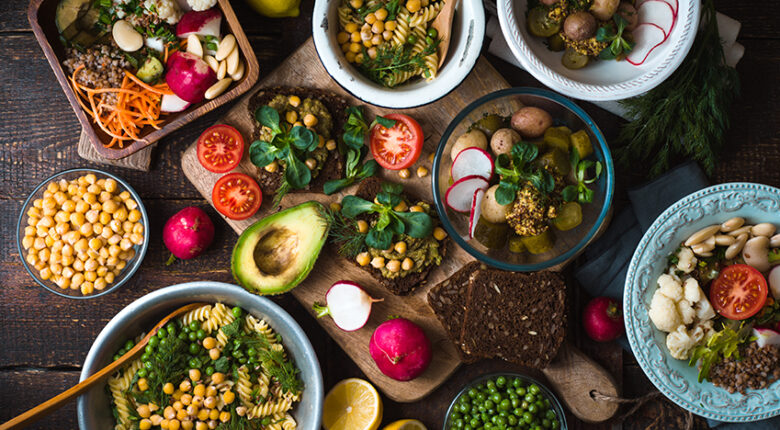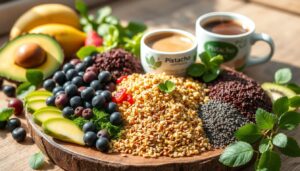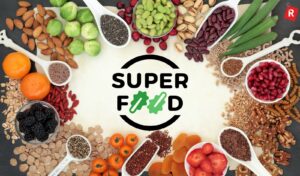Superfoods have earned their reputation as nutritional powerhouses packed with vitamins, minerals, antioxidants, and other beneficial compounds that promote health and wellbeing. Integrating these foods into your daily meals can help boost your immune system, improve energy levels, and support long-term disease prevention. However, many people find it challenging to include superfoods regularly due to busy schedules or lack of ideas. The good news is that incorporating superfoods into your everyday diet can be simple, enjoyable, and adaptable to any lifestyle. This article will guide you through practical ways to add superfoods to your meals effortlessly, along with helpful tips and insights.
What Are Superfoods, and Why Include Them?

Superfoods are nutrient-dense foods that provide exceptional health benefits. Common examples include berries, leafy greens, nuts, seeds, whole grains, and fatty fish. These foods contain antioxidants that combat oxidative stress, fiber that supports digestion, and healthy fats that promote heart health.
Adding superfoods to your meals supports a balanced diet and enhances your body’s natural defenses. The best part is you don’t have to overhaul your entire eating routine—small adjustments can have a big impact.
Easy Ways to Add Superfoods to Your Breakfast
Breakfast is a perfect opportunity to start your day with nutrient-rich superfoods. Consider these simple ideas:
- Smoothies: Blend spinach, kale, berries, chia seeds, and a scoop of Greek yogurt for a creamy, antioxidant-packed smoothie. It’s quick, portable, and highly customizable.
- Oatmeal Toppings: Add flaxseeds, walnuts, and fresh fruit like blueberries or sliced bananas to your morning oats. These add fiber, omega-3s, and natural sweetness.
- Avocado Toast: Top whole-grain toast with mashed avocado, a sprinkle of chia or hemp seeds, and a dash of lemon juice for healthy fats and a vitamin boost.
Incorporating Superfoods in Lunch and Dinner
For lunch and dinner, superfoods can be incorporated through salads, bowls, and side dishes:
- Salads: Create vibrant salads with mixed greens (spinach, arugula), cherry tomatoes, nuts (almonds, walnuts), and a protein source such as grilled salmon or chickpeas. Drizzle with olive oil and lemon for healthy fats and flavor.
- Grain Bowls: Use quinoa, brown rice, or farro as a base, topped with roasted vegetables, avocado, beans, and a sprinkle of seeds like pumpkin or sesame.
- Soups and Stews: Add nutrient-rich vegetables like kale, broccoli, or sweet potatoes to your soups and stews. Season with turmeric or garlic to boost anti-inflammatory benefits.
Superfoods as Snacks and Quick Add-ons
Snacking on superfoods can maintain your energy throughout the day and keep cravings in check:
- Nuts and Seeds: Keep a small container of almonds, pistachios, or sunflower seeds handy for a satisfying and heart-healthy snack.
- Fresh Fruit: Apples, oranges, and berries make convenient and delicious snacks packed with vitamins and fiber.
- Dark Chocolate: Choose dark chocolate with at least 70% cocoa to enjoy antioxidant benefits in moderation.
Chart: Nutritional Benefits of Popular Superfoods
| Superfood | Key Nutrients | Health Benefits | Easy Meal Ideas |
|---|---|---|---|
| Blueberries | Antioxidants, Vitamin C | Boost immune system, reduce inflammation | Smoothies, oatmeal topping, snacks |
| Spinach | Vitamin K, Iron | Supports bone health, improves energy | Salads, smoothies, sautés |
| Quinoa | Protein, Fiber | Stabilizes blood sugar, supports digestion | Grain bowls, side dishes |
| Almonds | Vitamin E, Healthy Fats | Protects cells, supports heart health | Snacks, salad toppings |
| Salmon | Omega-3 fatty acids | Reduces inflammation, supports brain health | Grilled dinners, salads |
| Chia Seeds | Fiber, Omega-3 | Improves digestion, heart health | Smoothies, yogurt, oatmeal |
| Turmeric | Curcumin | Anti-inflammatory, antioxidant | Soups, stews, teas |
Tips for Making Superfoods a Habit
- Plan Ahead: Prepare meals with superfoods in advance. For example, batch-cook quinoa or chop vegetables for quick assembly later.
- Start Small: Begin by adding one or two superfoods per meal and gradually increase as you get comfortable.
- Experiment with Recipes: Try new recipes that highlight superfoods, such as berry salads, turmeric rice, or salmon with roasted veggies.
- Keep It Convenient: Stock up on frozen berries, pre-washed greens, and canned beans to make cooking faster and easier.
- Pair Superfoods with Familiar Favorites: Mix superfoods into dishes you already enjoy to make the transition smooth.
Frequently Asked Questions (FAQs)
1. Can I get enough nutrients from superfoods alone?
Superfoods provide high nutrient density but should be part of a balanced diet that includes a variety of foods to meet all your nutritional needs.
2. Are superfoods suitable for all diets?
Yes. Superfoods can be adapted to fit vegetarian, vegan, gluten-free, and other dietary preferences.
3. How often should I eat superfoods?
Incorporating superfoods daily or several times a week can contribute positively to your health.
4. Are frozen superfoods as nutritious as fresh?
Frozen superfoods often retain most of their nutrients and can be more convenient and affordable without sacrificing quality.
5. Can children benefit from eating superfoods?
Absolutely. Superfoods provide essential nutrients that support growth, immunity, and development in children.
Conclusion
Incorporating superfoods into your daily meals doesn’t have to be complicated or time-consuming. By making small, manageable changes—whether it’s adding berries to your breakfast, tossing spinach into salads, or snacking on almonds—you can significantly enhance your nutrient intake. Superfoods offer a convenient and delicious way to boost your health, support your immune system, and maintain energy throughout the day.
With planning, creativity, and consistency, superfoods can become a natural part of your routine, helping you enjoy balanced nutrition and long-term well-being. Start by picking a few favorites and gradually build a colorful, nutrient-rich diet that suits your lifestyle.
References
- Harvard T.H. Chan School of Public Health. The Nutrition Source: Superfoods. https://www.hsph.harvard.edu/nutritionsource/superfoods/
- U.S. Department of Agriculture. ChooseMyPlate: Vegetables and Fruits. https://www.myplate.gov/eat-healthy/vegetables
- National Institutes of Health (NIH). Omega-3 Fatty Acids Fact Sheet. https://ods.od.nih.gov/factsheets/Omega3FattyAcids-HealthProfessional/




